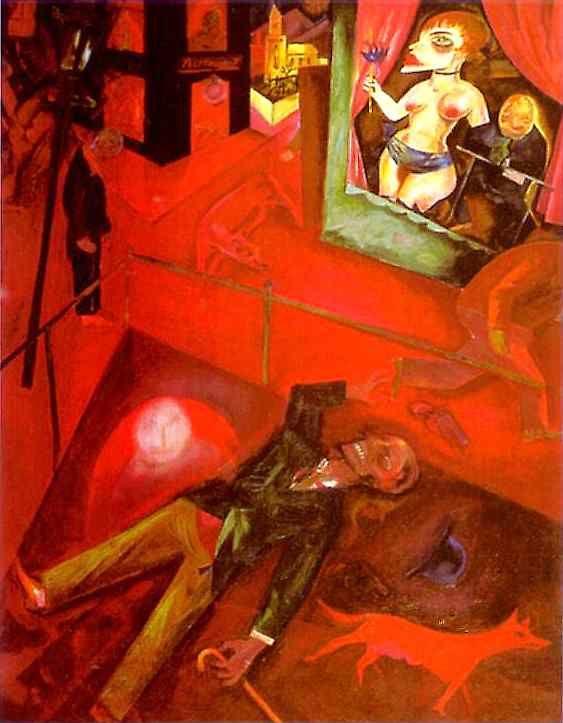Similar to Riefenstahl, his artwork was primarily following the events of the first World War. The difference is that while Riefenstahl may have been loyal to the German troops, Grosz despised them. His anti-war movement had him in much trouble throughout his time in Germany, including being arrested in 1919. Soon, he moved to America and became a teacher at the Art Students League of New York.
http://en.wikipedia.org/wiki/George_Grosz
 Suicide. 1916. Oil on canvas. 100 x 77.6 cm. Tate Gallery, London, UK.
Suicide. 1916. Oil on canvas. 100 x 77.6 cm. Tate Gallery, London, UK.
http://www.abcgallery.com/G/grosz/grosz.html
So overall, I'm finding few similarities between this man and Leni Riefenstahl, but they both appear to be genius artists. With such bizarre imagery and caricatures, I find George Grosz a bit more similar with Otto Dix.
No comments:
Post a Comment